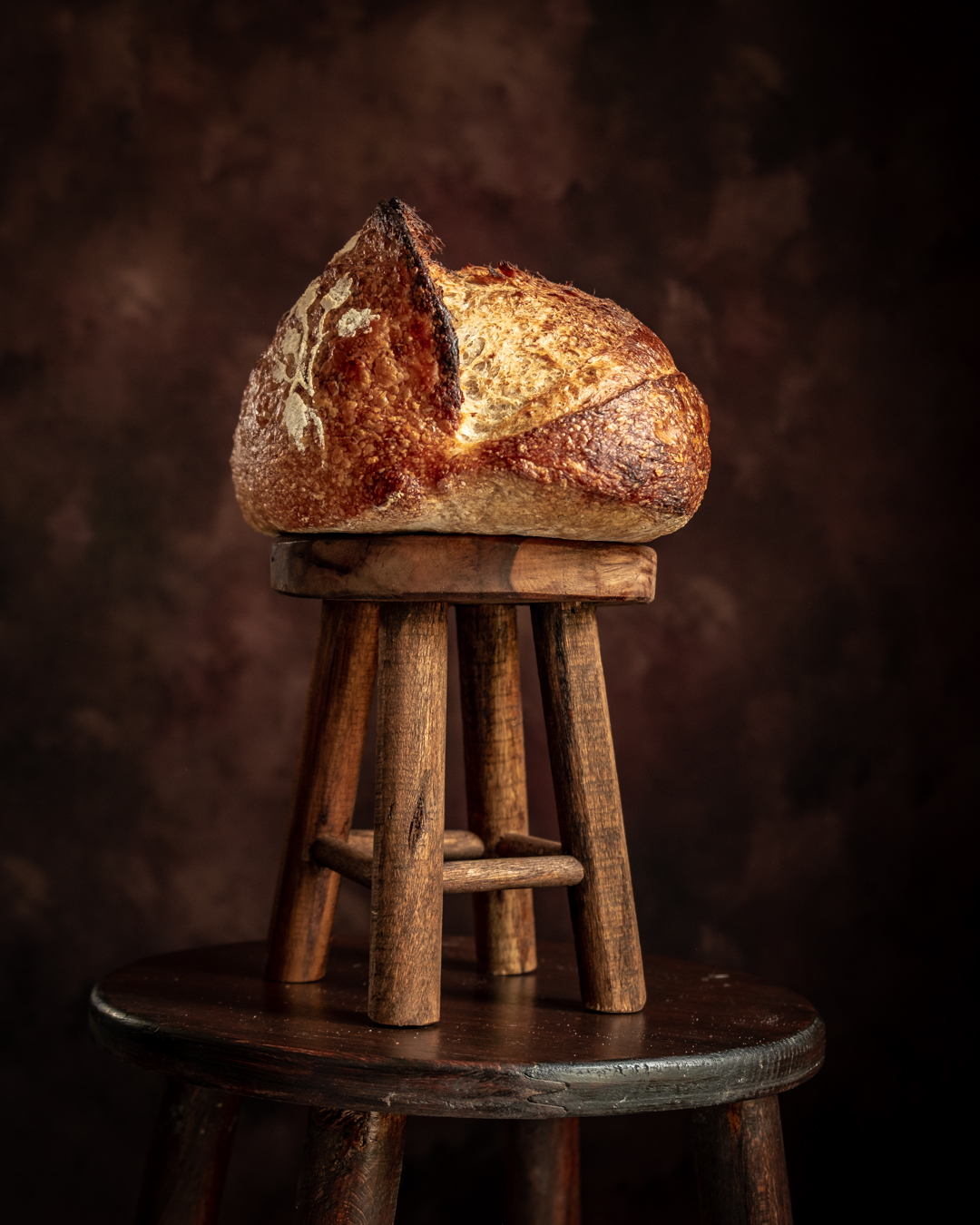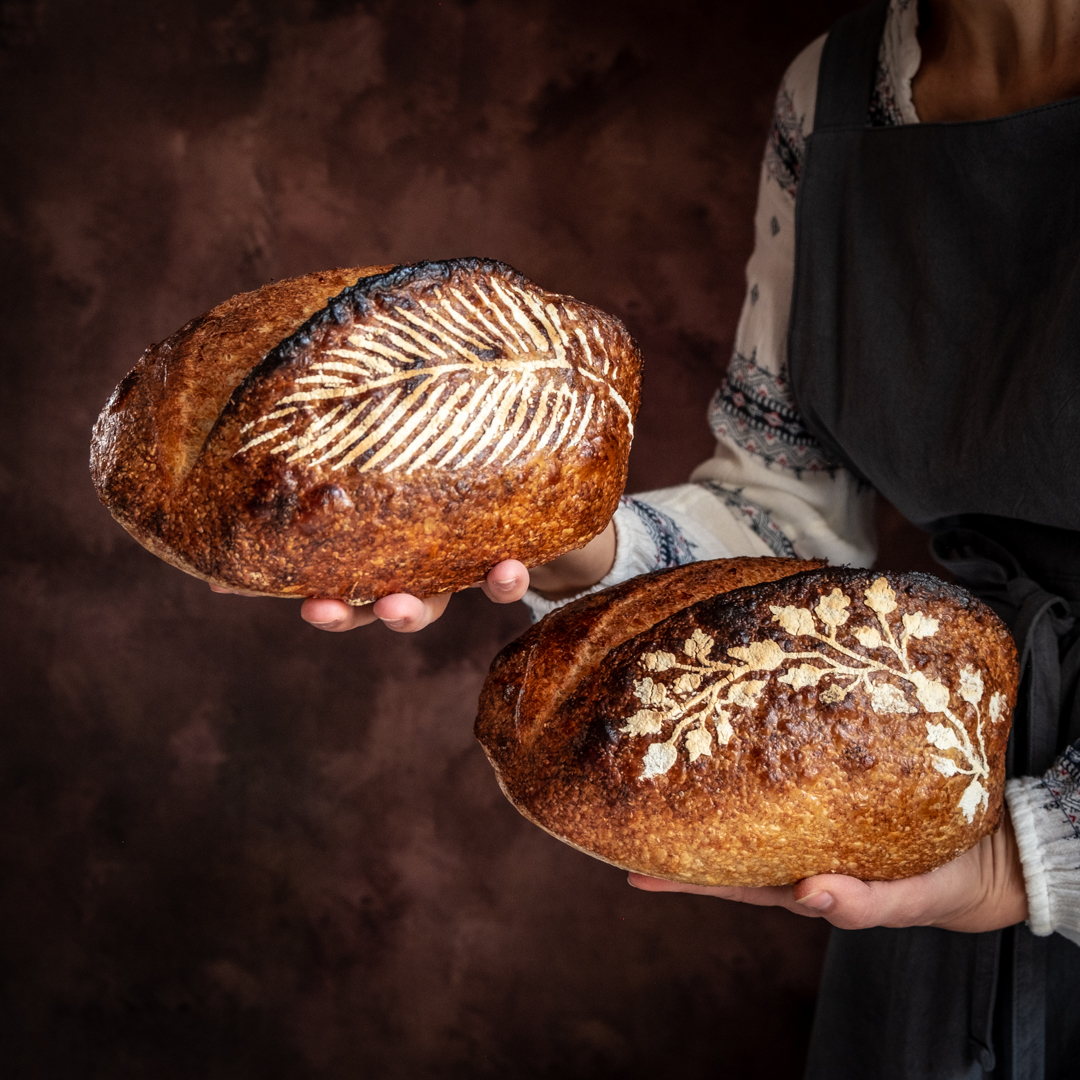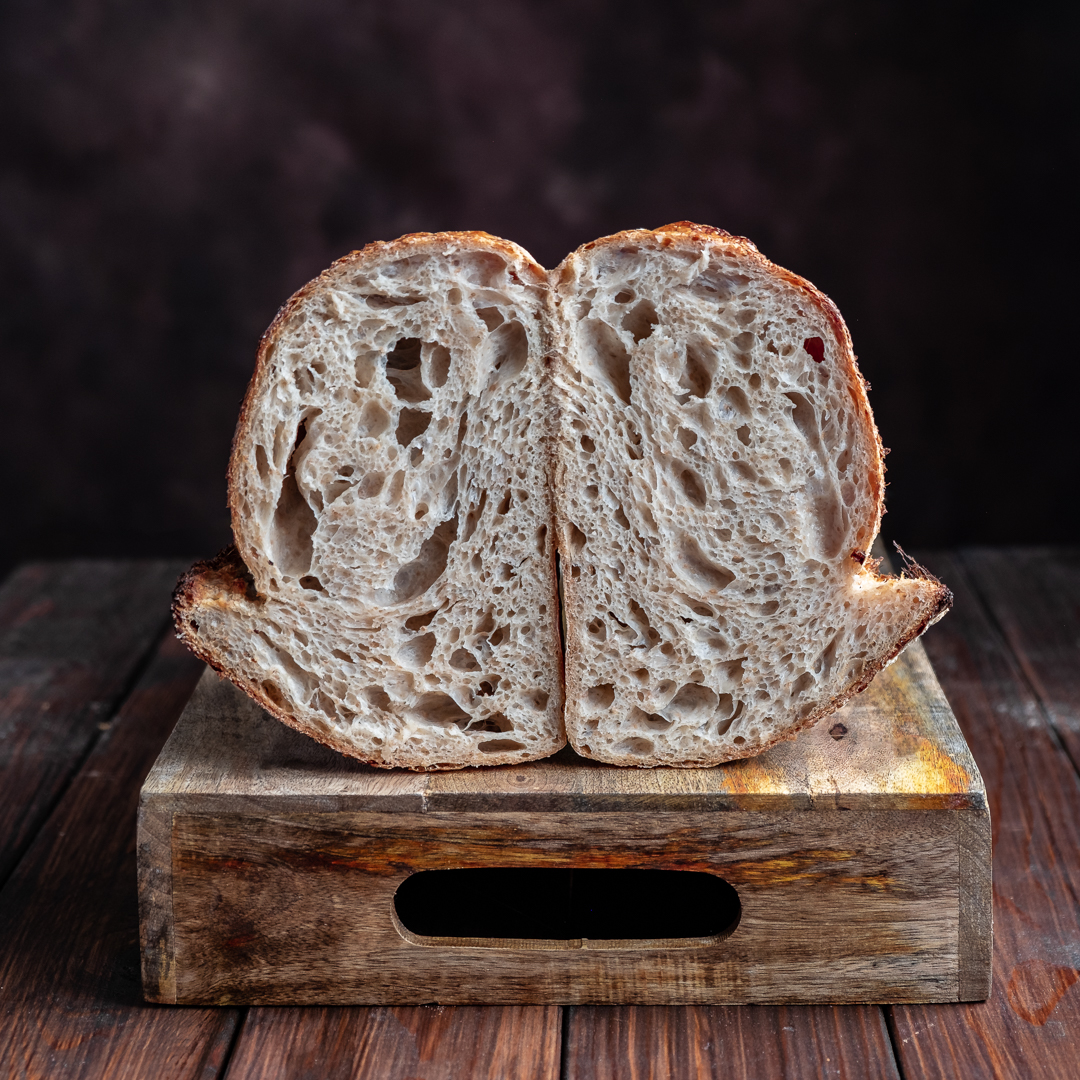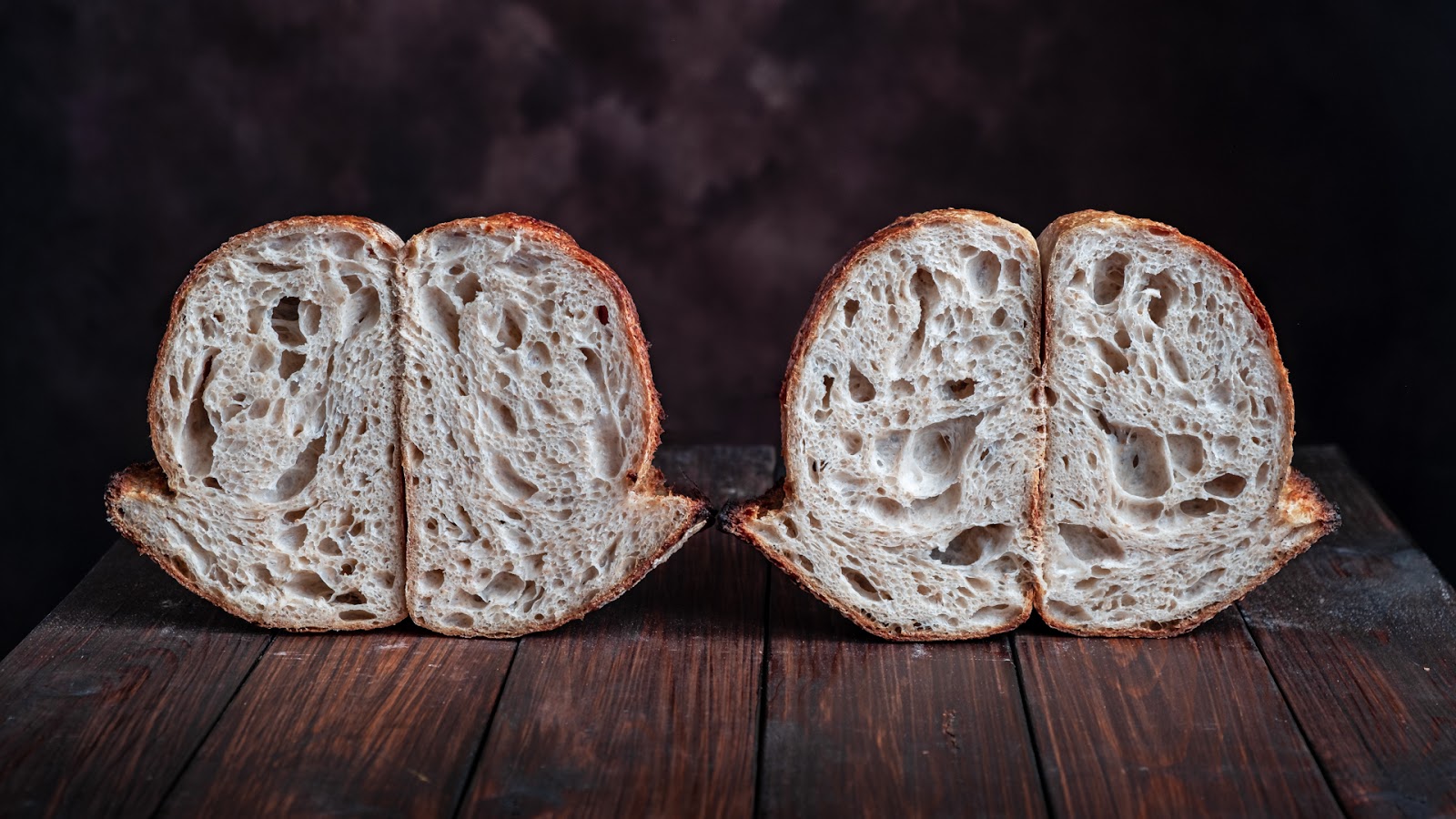Open crumb is a dream for any baker for its imposing outside and inside look.
It is a wish for a professional baker, as bigger loaves are quickly sold.
Open crumb is a pride for a home baker, prooving high baking skills and mastering the fermentation process.
But open crumb is not just about the look.
Pushing fermentation to the maximum means that the sugars in the dough are more consumed turning the bread less caloric. This means healthier bread.
When I started making sourdough bread I wished I had all the details to understand how it works. It took me many years to practice and observe the dough. It took me many books to read, articles or posts to digest or videos to watch. The trick in all this way was to pay attention and learn from my own experience.
I have never followed a baking school, everything I know is self-learning. There are many materials out there to learn from, free or paid, covering from the basic to the most scientific explanations. But the most important is to practice what others say and develop your own baking skills.
What I love the most about sourdough baking is that you never feel you master it completely and there is always something new to learn from every bake. Unfortunately, is not that simple to follow exactly a recipe, you need to learn to read plenty of signs that recipes do not mention. You need to develop a feeling for the dough. This happens with your eyes and with your hands.
On the way, you need to understand WHY every step is done and what it brings. Otherwise, why do it?


It is the jewel of a baker although I know many who will not make or buy an open crumb but a more dense one.
I tried to gather in this video all my lessons learned and share them with you. I hope that you take a shorter way to perfect open crumb than I took, and I offer you what I wish I had known 8 years ago when I started baking sourdough bread for me and my family.
However, this is not the bread to spread butter on. Pick rather a sandwich loaf.
It is instead the perfect bread to accompany a soup or another dish.
Here is my conclusion gathered in a list of SECRETS for achieving open crumb:
1. Use stronger bread flour
2. Use a healthy sourdough starter
3. Use higher dough hydration (>70%)
4. Develop a strong gluten network
5. Extend the fermentation to the maximum without over fermenting
6. Learn how to read the dough
7. Improve your dough handling skills
8. Use steam for baking
Ingredients: (1782g, 78% hydration)
180 g sourdough starter (100% hydration)- 180g whole wheat flour
- 721g strong bread flour
- 683g water (divided in 2 parts: 500g + 183g)
- 18g salt
- [Day 1, Friday, 23:00] Scaling. Start by scaling your ingredients using a balance and put them on the table to ensure that nothing is forgotten.
- In a bowl, mix the whole wheat flour with 183ml of water. Cover the bowl and let it sit overnight in a cool place (<15ºC). If it is too warm, put it in the fridge. I also feed my starter now, to be ready for the next day: 20g of starter + 80g of water + 80g of bread flour = exactly the quantity I need in the morning for my dough)
- [Day 2 Saturday, 8:00] Mix water + bread flour. Mix only the bread flour with water (slightly warmed up for 1 minute in the microwave) until well combined. Do not knead at this stage, just ensure there is no unincorporated dry flour resting in the bowl and that's it. I put this dough in the bread proofer set at 28ºC and I also add the bowl with the whole wheat mini dough to warm. I then let them both sit for 60 minutes.
- [Day 2 Saturday, 9:00] Sourdough starter. Add the preferment over the dough and the whole wheat dough and mix by hand or with a standing mixer for 10 minutes. After mixing, let the dough relax for 1 hour.
- [Day 2 Saturday, 10:00] Salt. Add the salt and mix again for 5 minutes. Then, let the dough relax again for 1 hour.
- [Day 2, Saturday, 11:00] Divide and Stretch and Fold. Take the dough out of the bowl put it on the slightly wet table board and divide it into 2. Stretch and fold each piece on the board and place them in squared glass bowls. Let them sit covered for 1 hour.
- [Day 2, Saturday, 12:00] Lamination. Take each piece out of the bowl and do the lamination. Let the dough rests for 1 hour.
- [Day 2, Saturday, 13:00] Coil fold 1. Start now a set of 4 coil folds performed straight in the bowls. Do the first coil fold set in each glass bowl and let them sit for 1 hour.
- [Day 2, Saturday, 14:00] Coil fold 2. Do a second set of coil folds in the glass bowls and let them sit for 1 hour.
- [Day 2, Saturday, 15:00] Coil fold 3. Do a third set of coil folds for each dough and let them sit for 1 hour.
- [Day 2, Saturday, 16:00] Coil fold 4. Do a fourth set of coil folds for each dough and let them sit for 1 hour.
- [Day 2, Saturday, 17:00] Shape the loaves on the lightly floured board. Place the dough face down into well-floured bannetons. Repeat the process for the second piece of dough. [PH 4.16, DT 25ºC]. Leave the dough in the bannetons for 1 hour more and place it in the fridge overnight. [PH 4.09, DT 25ºC]
- [Day 3, Sunday, 9:00] Score. Before scoring, you need to preheat the oven and the baking stone at 275ºC.
Take the dough out from the fridge and reverse the banneton on baking paper. Score and decorate the bread as you like. Immediately after, slide the loaves over the hot stone and create steam. - Bake at 270ºC for 15 minutes then reduce the oven temperature to 220ºC and continue to bake for 25 minutes.
- [Day 3, Sunday, 9:40] Cool. The bread needs to cool for at least 2 hours until it reaches room temperature. The cooking process continues slowly even after taking the bread out of the oven, so this is why it is important to not skip this step and to resist cutting it too early. If you can, of course...
- [Day 3, Sunday, 11:40] Cut. Now is the big moment to enjoy a slice of bread...



















0 comments:
Post a Comment